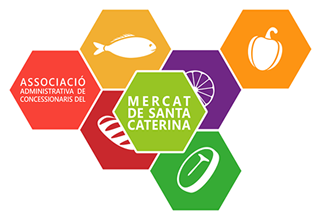Olivas is a term that is used equally in Spain to describe the fruit of the olive tree that can be used together with the term olives, the first denomination derives from the Spanish name of the tree (Olivo-Oliva) and the second from the product derived from the fruits ( Aceite (Oil) -Aceituna), both describe the same product with which the visitor if he finds any of the two words describe exactly the same product.
Read More...
More and more dishes are being introduced into Mediterranean cuisine that are accompanied by edible seaweed, generally they are already presented dry and rehydrated to proceed to their consumption in rice dishes, salads, fish dishes and other preparations, apart from those that make up world famous sushi. And the sort that is normally used in Asia.
Read More...
The Allioli sauce is an ancient sauce that was made in a rural environment whose base was solely and exclusively garlic and olive oil. The garlic in pieces was crushed with a pestle and a little salt to prevent it from slipping and it was emulsioned by slowly pouring a fine stream of olive oil, stirring constantly with the pestle, until a thick paste was obtained.
Read More...
anchovy is basically known, with its version in pot or in a can or in oil. Which comes from the fresh fish with the same name. This product is not really a preserve as it has a much lower shelf life than traditional preserves.
Read More...
Béchamel is a sauce originally from France, widely used in Catalan cuisine, especially for some dishes based on Italian pasta and in many “au gratin” dishes, vegetables , and fish.
It is a very easy sauce to make and it is normally covered by sprinkling it with a layer of grated soft cheese , with butter shavings and later baked in the oven.
Read More...
A bad habit in many bars and restaurants in our country is to translate as sandwich any type of cold meat or other filling that goes between two slices of bread, when really only very few sandwiches are made with sliced bread. Basically cheese and ham are made with sliced bread, some of the cold vegetable type, with lettuce etc. with mayonnaise and with mayonnaise and tuna.
Read More...
Boquerón is the Spanish name for the fish when it is fresh. In addition to the preparation that is made in salt, as we have explained in the section on anchovies or its canned preparation, this fish is traditionally eaten in two popular ways. In vinegar, the fillets are prepared with very minced garlic and parsley are dipped in vinegar and sometimes a little oil is added, their final appearance is the same as that of an anchovy but white in colour.
Read More...
Calçot is a white onion (Allium Cepa L.) that is grown in a very special way so that it is elongated, and it has to be one of the excellent typical dishes in Catalan gastronomy. It is typical of some areas of Tarragona, although currently it is cultivated in practically all of Catalonia, and even in other provinces of Spain and abroad.
Read More...
It grows in humid pine forests, mainly red pine, and is usually surrounded by moss. One of its main characteristics is that large colonies are formed, although they must be taken one by one because they are very delicate and they break easily.
The perfect season for camagrocs is from September to winter, when the first frosts begin. It is one of the species that lasts the longest, since most disappear when autumn arrives.
Read More...







